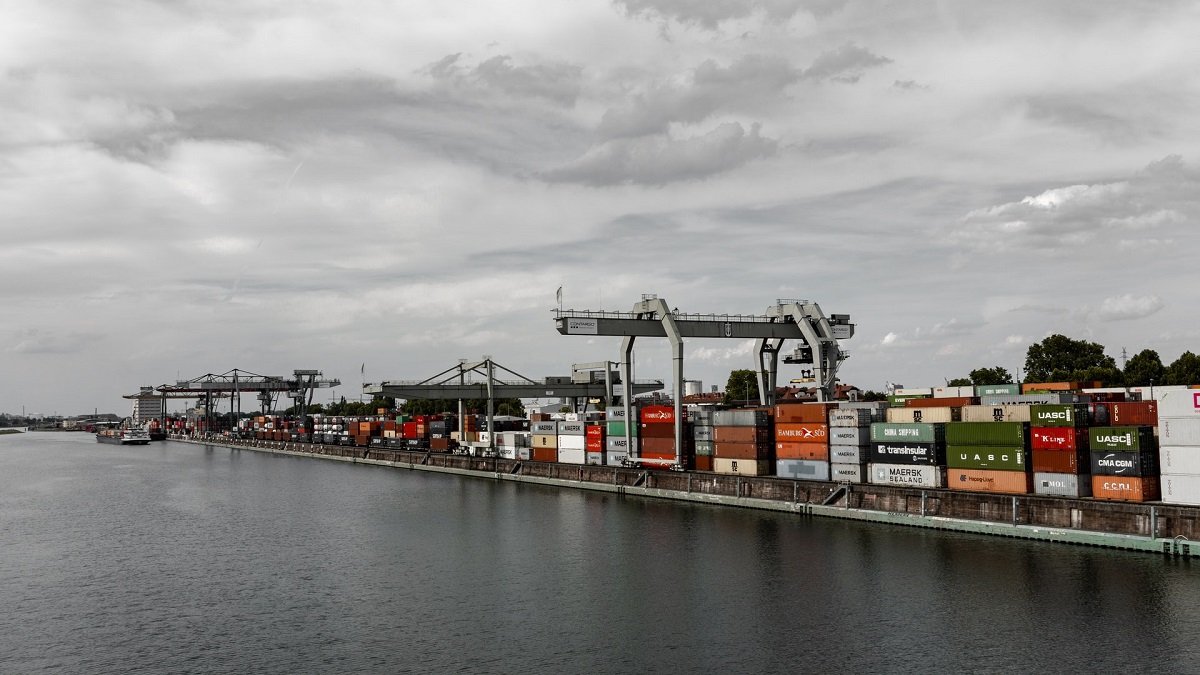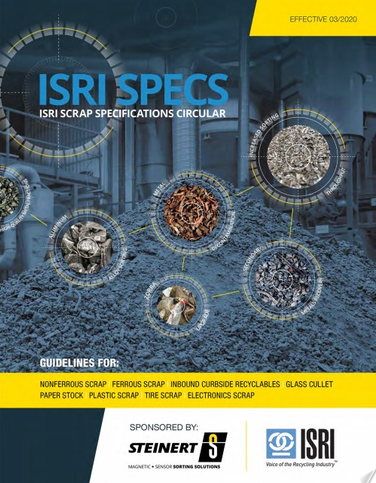As the scrap market continues to maneuver its way through early 2021, Scrap News takes a close look at key issues affecting the recycling industry.
U.S. Scrap Commodities Exports
The quantity of exports of U.S. scrap commodities—including ferrous, nonferrous, recovered paper and fiber, plastic, and other recycled commodities—was down 12% in January 2021 compared to scrap exports in January 2020. However on a dollar basis, U.S. scrap exports rose 21% year-on-year to $1.96 billion this past January. “Even as the quantity of material we’re sending overseas is declining, the value is going up,” says Joe Pickard, ISRI’s chief economist/director of commodities. “It normally doesn’t happen unless commodity prices are rising, which is what we’re seeing.”
The decrease in scrap export flows is likely due to shipping container and vessel availability rather than diminished demand. Scrap producers in the U.S. and Europe are reporting difficulty securing shipping containers for overseas exports. Following the Chinese New Year, market participants report in-bound containers arriving in the U.S., the European Union, South America, and elsewhere are quickly being unloaded and put back onto ships bound for China.
Producer Price Indexes for Recycled Commodities
Along with the rise in manufacturing output, all scrap commodity producer price indexes were up on a year-on-year basis. Recycled paper increased 97.1% in January 2021 compared to January 2020. For the monthly change, recyclable paper continues to show volatility, rising 7.5% in January compared to last January. Meanwhile, iron and steel scrap rose 50.8% in January 2021 compared with last January. Compared to the prior month, this index increased 20.6%.
The consumer price index for the week of March 8 was +0.4% and the producer price index was +0.5%. Reports for February were largely in line with the consensus forecast.
Nickel and Stainless Steel Price Volatility
LME nickel cash prices have plunged from around $20,000 per metric ton in late February to less than $16,000 per metric ton in early March. Nickel stocks in LME warehouses have increased by more than 13,000 metric tons since the start of the year to over 260,000 metric tons. Despite increases to manufacturing and commodity market expectations in 2021, stainless steel scrap prices and market sentiment have come under pressure. However, the overall economic outlook remains largely positive. Goldman Sachs maintains its 12-month nickel price forecast at $21,000 per metric ton, which should incentivize demand for stainless steel scrap.
Increase Demand for Recycled Plastics
The severe winter weather in Texas dealt a harsh blow to U.S. plastics production. Mass blackouts from the February freeze forced plants to shut down, and many are still offline. The production shutdowns in Texas could lead to a sharp decline in U.S. resin exports. At the same time, it could signal a positive turn for the plastic scrap market, and an increase in demand for recycled pellets. During January and February, recycled plastic prices increased 10% and prices remained stable with demands on low-density polyethylene (LDPE), polypropylene (PP), HDPE, PC, polystyrene (PS), and ABS.
Malaysia’s Draft Guidelines for Scrap Imports
ISRI, among others, is paying close attention to Malaysia’s draft guidelines for scrap metal imports. In early March, a Malaysia-based cargo inspection and certification service, SIRIM QAS International Sdn.Bhd., presented new draft guidelines on scrap imports that may indicate stricter regulations on ferrous and nonferrous metals imports. ISRI submitted comments on the guidelines to SIRIM QAS on March 9. Since then, SIRIM QAS also released guidelines for paper imports.
According to ISRI, these guidelines offer a window into what the Malaysian government may be contemplating in terms of contamination tolerance and types of grades allowed for import. “It looks like they’re testing the waters,” says Adina Renee Adler, ISRI’s vice president of advocacy. ISRI submitted comments asking for additional clarity and providing recommendations. It questioned requiring both pre- and post-shipment inspections. Inspections cost time and money, so requiring two inspections for each shipment would be “impairing the competitiveness of Malaysia’s manufacturers as compared to their international competitors,” says ISRI. One inspection would be enough, “if inspectors are properly trained and information shared appropriately,” ISRI notes.
Unemployment Claims
The data on U.S. unemployment is promising. Initial unemployment claims decreased to 684K, seasonally adjusted, a post COVID-19 low and down from the prior week’s level of 781K. However, claims are still nearly three times as high as pre-COVID 19 levels. The University of Michigan’s preliminary reading on March consumer sentiment was better than expected at 83.0, up from 76.8 in February, likely due to the passage of the $1.9 trillion stimulus package and the increasing number of vaccinations.
As vaccines become more available to the general public, states may start lifting restrictions, which should renew the service industry. “[Service jobs] will start to come back, over the next three to six months we may see a great reduction on unemployment,” says Bret Biggers, ISRI’s senior economist. “The service sector, including restaurants, hotels, motels, movie theaters, will start coming back, and that bodes well for recycling,” says Pickard. “If people are spending more, then they’re going to generate more end-of-life scrap.”
Federal Open Market Committee Quarterly Meeting
During the Federal Open Market Committee (FOMC) meetings on March 16-17, participants submitted projections for GDP growth, the unemployment rate, and inflation for 2021 to 2023 and over the longer run. Before the meetings, officials signaled they would not pull back on stimulus efforts despite improving economic conditions. For 2021, the Federal Reserve board members project a GDP growth of 6.5%, which is an increase from their projection made in December 2020 of 4.2%. “This is an increase of 2.3% or an over 50% increase,” explains Pickard. The board projects an unemployment rate of 4.5%, a decrease from the 5% projection in December. The Federal Reserve projects unemployment will continue to drop each year from 2021 to 2023.
The Federal Reserve projects 2.4% inflation in 2021, an increase from the 1.8% projection back in December. In its effort to increase the inflation rate, the Federal Reserve will continue to spur on the economy in several ways, including keeping borrowing rates low. While these low rates make purchasing easier, there is a risk of overheating the economy. “Some people are concerned inflation will go beyond the 2% but we haven’t seen that yet,” says Pickard.
Chad Moutray, chief economist at the National Association of Manufacturing (NAM), met with the Federal Reserve on March 19 to provide an update on the manufacturing sector. Not only did he share data, but he also included comments from ISRI and other associations on several issues facing the recycling industry including issues surrounding supply chain disruptions, logistics challenges, workforce challenges, and the container/shipping availability issue.
Compiled based on research from ISRI’s economic team, Joe Pickard and Bret Biggers, ISRI’s chief economist/director of commodities and senior economist, respectively.
Additional Resources













